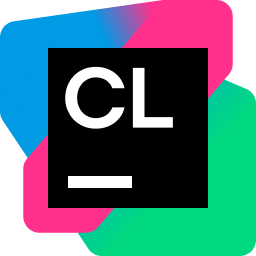https://github.com/micro-gl/micro-gl
Headers Only C++11 CPU Vector Graphics. no std-lib, no FPU and no GPU required !
https://github.com/micro-gl/micro-gl
cpp cpp11 embedded graphics svg
Last synced: 24 days ago
JSON representation
Headers Only C++11 CPU Vector Graphics. no std-lib, no FPU and no GPU required !
- Host: GitHub
- URL: https://github.com/micro-gl/micro-gl
- Owner: micro-gl
- License: other
- Created: 2021-02-20T17:08:12.000Z (almost 5 years ago)
- Default Branch: master
- Last Pushed: 2024-08-24T08:19:25.000Z (over 1 year ago)
- Last Synced: 2024-08-24T09:32:22.217Z (over 1 year ago)
- Topics: cpp, cpp11, embedded, graphics, svg
- Language: C++
- Homepage: http://micro-gl.github.io/docs/microgl
- Size: 13.3 MB
- Stars: 237
- Watchers: 8
- Forks: 13
- Open Issues: 6
-
Metadata Files:
- Readme: README.md
- License: LICENSE.MD
Awesome Lists containing this project
- fucking-awesome-cpp - micro-gl - Realtime, Embeddable, Headers Only C++11 CPU vector graphics. no STD lib, no FPU and no GPU required. [CUSTOM] 🌎 [website](micro-gl.github.io/docs/microgl) (Graphics)
- awesome-hpp - micro-gl - gl/micro-gl?style=social)](https://github.com/micro-gl/micro-gl/stargazers/) | 👾 CPU Vector Graphics Engine (No FPU or std-lib needed). | [](http://unlicense.org/) | (Geometry, Graphics Processing, and Game Development)
- awesome-cpp - micro-gl - Realtime, Embeddable, Headers Only C++11 CPU vector graphics. no STD lib, no FPU and no GPU required. [CUSTOM] [website](https://micro-gl.github.io/docs/microgl) (Graphics)
README

# micro{gl}
[](https://github.com/micro-gl/micro-gl/actions/workflows/compile_macos.yml)
[](https://github.com/micro-gl/micro-gl/actions/workflows/compile_ubuntu.yml)
[](https://github.com/micro-gl/micro-gl/actions/workflows/compile_windows.yml)
**Fast**, Super **Slim**, **Embeddable**, **Headers** only **`C++11`** vector graphics library, that can run on any 32/64 bits computer without **FPU** or **GPU**. **No standard library required**.
check out our website at [micro-gl.github.io/docs/microgl](https://micro-gl.github.io/docs/microgl)


## Examples
A circle with Texture fill and Gradient stroke
```cpp
using number = float;
using Canvas24= canvas, CANVAS_OPT_32_BIT>;
using Texture24= sampling::texture, sampling::texture_filter::NearestNeighboor>;
fast_radial_gradient gradient{0.5, 0.5, 0.75};
linear_gradient_2_colors<120> gradient2Colors{{255,0,255},
{255,0,0}};
flat_color<> flatColor{{133,133,133, 255}};
auto img_2 = Resources::loadImageFromCompressedPath("images/uv_256.png");
Canvas24 canvas(W, H);;
Texture24 tex_uv{new bitmap(img_2.data, img_2.width, img_2.height)};
gradient.addStop(0.0f, {255,0,0});
gradient.addStop(0.45f, {255,0,0});
gradient.addStop(0.50f, {0,255,0});
gradient.addStop(1.f, {255,0,255});
canvas.clear({255,255,255,255});
canvas.drawCircle(
tex_uv, // fill
gradient2Colors, // stroke
200+0, 200+0,
150+t, 10, 255
);
```
A Rectangle, that samples a circle
```cpp
using Canvas24= canvas>;
using number = float;
// using number = Q<12>;
circle_sampler sampler{};
sampler.updatePoints({0.50,0.5}, 0.5, 0.10);
sampler.color_fill= {0, 0, 0, 255};
sampler.color_background= {255, 255, 255, 0};
sampler.color_stroke= {255, 255, 255, 255};
Canvas24 canvas(512, 512);
canvas.clear({255,0,255,255});
canvas.drawRect(
sampler,
0, 0, 300, 300);
```
A path tessellation with red color
```cpp
template
path_t path_arc_animation() {
path_t path{};
int div=32; //4
path.arc({200,200}, 100,
math::deg_to_rad(0.0f),
math::deg_to_rad(360.0f),
false, div).closePath();
path.arc({250,200}, 50,
math::deg_to_rad(0.0f),
math::deg_to_rad(360.0f),
true, div).closePath();
path.moveTo({150,150});
path.arc({150+0,150}, 50+t-0,
math::deg_to_rad(0.0f),
math::deg_to_rad(360.0f),
false, div);//.closePath();
return path;
}
// Choose your own number format
// using number = float;
// using number = double;
// using number = Q<15, long long>;
using number = Q<8, microgl::ints::int32_t, microgl::ints::int64_t, 1>;
// using number = Q<2, microgl::ints::int64_t>;
// using number = Q<4, microgl::ints::int32_t>;
// using number = Q<12>;
using Canvas24= canvas>;
sampling::flat_color<> color_red {{ 255, 0, 255, 255}};
Canvas24 canvas(255, 255);
canvas.clear({255, 255, 255, 255});
canvas.drawPathFill(
color_red,
matrix_3x3::identity(),
path,
microtess::fill_rule::even_odd,
microtess::tess_quality::prettier_with_extra_vertices,
255
);
```
## Features
> **Language**
- **`C++11`**, does not use any **`STL`** library and **standard library**.
- **headers only** library
- most functions are templates, which means you compile only what is used
- compile-time polymorphism (no runtime virtual methods)
- support for 32 bits and 64 bits
- self contained and modular.
> **Graphics**
- very modular design. if something does not exist, you can implement your own
- over 10 blending modes implemented, you can wrote your own and supply as well
- **`porter-duff`** alpha compositing
- support for 2d sampler
- can support any pixel coding you need, we implemented a lot out of the box
- can render 3d geometries
- we support 3d shaders
- no need for **GPU**, it is all **CPU**
- no need for **FPU**
- support for any number system including **`Q`** numbers (fixed point), no need to use float points
> **Geometry**
- fast implementation for common shapes (rect, rounded rectangles, circles, triangles)
- batch triangles like **GPU** would
- support polygons of any type convex, simple, and complex polygons
- path fills (with even-odd or zero-one fill rule) in any precision
- stroke fills
- quadrilaterals
- bezier patches
- we providea dynamic array, but you can plug your own.
## Installing `micro{gl}`
`microgl` is a headers only library, which gives the following install possibilities:
1. Using `cmake` to invoke the `install` target, that will copy everything in your system via
```bash
$ mkdir cmake-build-release
$ cd cmake-build-release
$ cmake -DCMAKE_BUILD_TYPE=Release ..
$ cmake --install .
```
2. Copying the `include/microgl` to anywhere you want.
3. Install via [vcpkg](https://vcpkg.io).
## Consuming `micro{gl}`
Following options are available:
1. copy the project to a sub folder of your project. Inside your **`CMakeLists.txt`** add
```cmake
add_subdirectory(/path/to/microgl)
target_link_libraries(your_app microgl)
```
2. If you installed **`micro{gl}`** with option 1 (see above) at your system, you can instead
```cmake
find_package(microgl CONFIG REQUIRED)
target_link_libraries(your_app microgl::microgl)
```
3. If you have not installed, you can add in your app's `CMakeLists.txt`
```cmake
target_include_directories(app path/to/microgl/folder/include/)
```
4. If you manually copied the `include/microgl` to the default system include path,
you can use `cmake/Findmicrogl.cmake` to automatically create the cmake targets
```cmake
list(APPEND CMAKE_MODULE_PATH ${PROJECT_SOURCE_DIR}/path/to/Findmicrogl/folder)
find_package(microgl REQUIRED)
target_link_libraries(your_app microgl::microgl)
```
5. Just copy the `include/microgl` into a sub folder of your project and include the header
files you need with relative path in your source files.
6. If you have vcpkg installed, install the `micro{gl}` using the `vcpkg install microgl` command, and then you can use option 2 (see above)
to find it. See issue micro-gl/micro-gl#33 for more details.
## Running Examples
First make sure you have
- [SDL2](https://www.libsdl.org/) installed at your system.
- [cmake](https://cmake.org/download/) installed at your system.
There are two ways:
1. Use your favourite IDE to load the root `CMakeLists.txt` file, and then it
will pick up all of the targets, including the examples
2. Using the command line:
```bash
$ mkdir cmake-build-release
$ cd cmake-build-release
$ cmake -DCMAKE_BUILD_TYPE=Release ..
$ cmake --build . --target
$ ../examples/bin/example_name
```
```text
Author: Tomer Shalev, tomer.shalev@gmail.com, all rights reserved (2021)
```
> 🙏🏻 Thanks to [JetBrains cLion Support Team](https://jb.gg/OpenSourceSupport) for granting this project an **OSS** license of **cLion** 